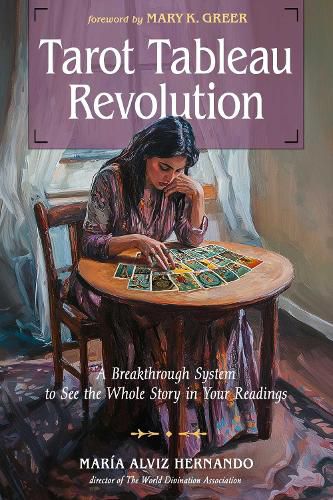Readings Newsletter
Become a Readings Member to make your shopping experience even easier.
Sign in or sign up for free!
You’re not far away from qualifying for FREE standard shipping within Australia
You’ve qualified for FREE standard shipping within Australia
The cart is loading…






A modern twist on a classic tarot method that enables readers to consistently interpret the cards with accuracy and confidence.
This first book from author Mara Alviz Hernando, director of the World Divination Association, offers tips and techniques for mastery of her tarot tableau system, allowing readers to easily see the interaction of characters, elements, and symbolism. Tarot tableau reading laying out the cards in a square or rectangular shape and interpreting them in the way that one might interpret a painting has become Mara's signature method. Cards are read in relationship to one another, and different tableaus utilize different numbers of cards.
Tarot Tableau Revolution covers an entire system, teaching readers to interpret tarot based on classic cartomantic techniques. No dot is left unconnected in this approach! Readers learn how the cards interact on different levels: elemental, directional, relational.
Over the centuries, the tableau technique fell into obscurity, until Alviz Hernando began teaching and demonstrating her method. With Tarot Tableau Revolution, now all readers can benefit from the author's style, gaining the most accurate and substantive interpretation of tarot.
$9.00 standard shipping within Australia
FREE standard shipping within Australia for orders over $100.00
Express & International shipping calculated at checkout
Stock availability can be subject to change without notice. We recommend calling the shop or contacting our online team to check availability of low stock items. Please see our Shopping Online page for more details.
A modern twist on a classic tarot method that enables readers to consistently interpret the cards with accuracy and confidence.
This first book from author Mara Alviz Hernando, director of the World Divination Association, offers tips and techniques for mastery of her tarot tableau system, allowing readers to easily see the interaction of characters, elements, and symbolism. Tarot tableau reading laying out the cards in a square or rectangular shape and interpreting them in the way that one might interpret a painting has become Mara's signature method. Cards are read in relationship to one another, and different tableaus utilize different numbers of cards.
Tarot Tableau Revolution covers an entire system, teaching readers to interpret tarot based on classic cartomantic techniques. No dot is left unconnected in this approach! Readers learn how the cards interact on different levels: elemental, directional, relational.
Over the centuries, the tableau technique fell into obscurity, until Alviz Hernando began teaching and demonstrating her method. With Tarot Tableau Revolution, now all readers can benefit from the author's style, gaining the most accurate and substantive interpretation of tarot.